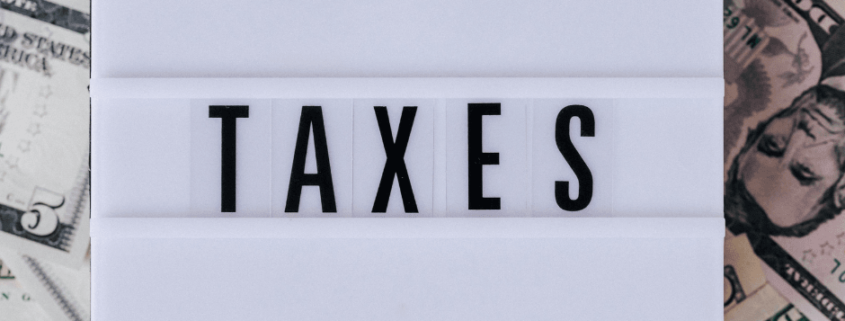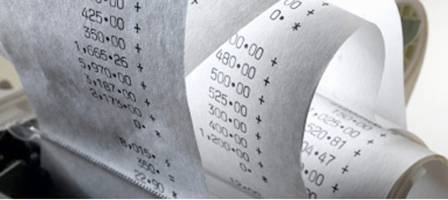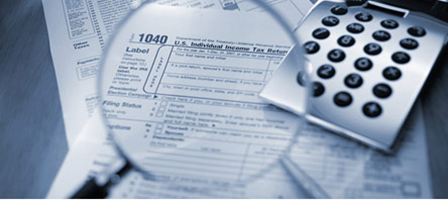End of Year Is Almost Here! Are You a Candidate for Bunching?
- Learn more about the bunching strategy.
- Discover how the standard deduction has changed since 2018.
- Learn which deductions you can itemize.
- Find out how to bunch medical expenses.
- Learn how the bunching strategy can work for other taxes, such as property and income taxes.
- Find out why charitable contributions work nicely for bunching
Bunching
Bunching is an effective tax strategy to keep in mind as the end of the year approaches. Are your itemized deductions typically roughly equal to the standard deduction amount? Then you may be a good candidate for using the bunching strategy.
In this technique, you take the standard deduction in one year and then itemize in the next. You may accomplish this by planning the payment of your deductible expenses so that you maximize them in the years when you itemize deductions. Commonly bunched deductible expenses include medical expenses, taxes, and charitable contributions. Think this strategy may benefit you for 2021? You may need to take action before the year is over.
The Standard Deduction
The changes in the 2017 Tax Cuts and Jobs Act (TCJA) included nearly doubling the standard deduction and placing limitations on or suspending certain itemized deductions, effective for tax years 2018 through 2025.
The new standard deduction amounts for 2018 were:
- $12,000 for single individuals and married people filing separately (MFS),
- $18,000 for heads of household, and
- $24,000 for married taxpayers filing jointly (MFJ).
These amounts have been adjusted for inflation since then. For 2021, they are
- $12,550 for single and MFS,
- $18,800 for heads of household, and
- $25,100 for MFJ.

Itemizing
If your deductions exceed the standard deduction amount for your filing status, you may itemize the following deductions:
- Medical expenses, to the extent they exceed 7.5% of your adjusted gross income (AGI);
- Taxes paid that year (for state or local income or sales tax as well as real property or personal property taxes), limited to $10,000;
- Home mortgage interest;
- Investment interest;
- Charitable contributions;
- Gambling losses, to the extent of your gambling winnings; and
- Certain infrequently encountered miscellaneous “tier-1” deductions.
Examples of bunching
To clearly illustrate how bunching works, here are a few examples of deductible payments that generally provide enough flexibility to make this approach worthwhile.
Medical Expenses
Say that you contract with a dentist for your child’s braces. This dentist offers you the options of an up-front lump-sum payment or a payment plan. If you make the lump-sum payment, the entire cost will be credited in the year when you paid it. This dramatically increases your medical expenses for that year.
If you do not have the cash available for the up-front payment, then you can pay by credit card. The IRS considers credit card payments as lump sum payments for tax purposes. If you do so, note that you cannot deduct the interest on that payment. You need to determine whether incurring the interest is worth the increased tax deduction. Another important issue related to medical deductions is that only the amount of medical expenses exceeding 7.5% of your AGI is actually deductible.
If you have abnormally high income in the current year, you may wish to put off your medical expense payments until the following year (e.g., if 7.5% of the following year’s income will be less than 7.5% of this year’s income).
Taxes
Property taxes are generally billed annually at midyear. Most locales allow these tax bills to be paid in semiannual or quarterly installments. Thus, you have the option of paying them all at once or in installments. This provides the opportunity to bunch the tax payments by paying only one semiannual installment (or two quarterly installments) in one year and pushing off the other semiannual (or two quarterly) installments until the next year.
Doing so will allow you to deduct 1½ years of taxes in one year and half a year of taxes in the next. However, be cautious if you are thinking about making late property tax payments as a means of bunching. Late payment penalties are likely to wipe out any potential tax savings.
If you reside in a state with a state income tax, any such tax paid or withheld during the year is deductible on federal taxes. For instance, do you make quarterly estimated state tax payments? Then the fourth quarter estimated payment is generally due on January of the subsequent year. This allows you to either make that payment by December 31 (thus enabling you to deduct the payment on the current year’s return) or pay it in January before the due date (thus enabling you to use it as a deduction on next year’s return).
A word of caution about itemized tax deductions: Under the TCJA, a maximum of $10,000 in itemized tax deductions is allowed, so no benefit will be gained by prepaying taxes when the tax total you’ve paid is already $10,000 or more. In addition, taxes are not deductible at all under the alternative minimum tax, so individuals under that tax scheme generally derive no benefits from itemized deductions.
Charitable Contributions
Charitable contributions are a nice fit for bunching because they are entirely at the taxpayer’s discretion. For example, if you normally tithe to your church, you can make your normal contributions throughout the year but then prepay the entire subsequent year’s tithe in a lump sum in December of the current year. If you do this for all contributions that you generally make to qualified organizations, you can double up on your contributions for one year and have no charitable deductions for the next year.
Normally, charities are very active in their solicitations during the holiday season, which lets you make forward-looking contributions at the end of the current year, or you can simply wait a short time and make them after the end of the year.
Charitable deductions do have a limit, but it is high for most types of contributions: 60% of AGI, or 30% of AGI for contributions of capital gain property deducted at fair market value.
Other seldom-encountered limitations exist as well. For 2021, itemizers can elect to suspend the 60%-of-AGI limitation for most cash contributions, including those paid by check and credit card. If the election is made, the taxpayer’s other contributions are figured first up to the 60, 50, 30, or 20% of AGI limitation. Then, cash contributions are allowed above those limits up to 100% of AGI. A 5-year carryover applies to any excess over 100% of AGI. If the taxpayer makes no election, regular AGI limits will apply.
Will you claim the standard deduction instead of itemizing in 2021? Note that you may claim a deduction of up to $300 ($600 on a joint return) for cash contributions you made to qualified charities. (Donor-advised funds and private foundations aren’t eligible for this non-itemizer deduction.)
More Information
Have questions about bunching your deductions? Want to do some in-depth strategizing about how this technique could benefit you? Call Fiducial at 1-866-FIDUCIAL or make an appointment at one of our office locations to discuss your situation.
Ready to book an appointment now? Click here. Know someone who might need our services? We love referrals!
For more small business COVID-19 resources, visit Fiducial’s Coronavirus Update Center to find information on SBA loans, tax updates, the Paycheck Protection Program, paid sick and family leave.









